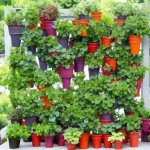As the chill of autumn begins to descend upon us, there’s nothing quite as comforting as a bowl of warm, homemade pumpkin soup. Packed with rich, earthy flavors, this simple yet satisfying dish is a staple in many family kitchens. But achieving that perfect, silky-smooth consistency every time can be a challenge. Fear not, we have some tried and tested techniques to ensure your pumpkin soup is faultlessly smooth and velvety each and every time you make it. Let’s dive into the world of soup perfection!
Selecting the Right Pumpkin
A successful pumpkin soup begins with selecting the right pumpkin. The variety of pumpkin you choose can greatly impact the texture and flavor of your soup.
In the same genre : How to Train Your Pet to Be Comfortable with Veterinary Visits?
When it comes to cooking, not all pumpkins are created equal. Some varieties, such as the Halloween favorite Jack-o’-lantern, are more suited for carving than culinary purposes, due to their fibrous and watery flesh. Instead, opt for smaller, ‘sugar’ or ‘pie’ pumpkins, known for their sweet, dense flesh. Varieties like ‘Sugar Pie’, ‘Baby Pam’, and ‘Autumn Gold’ are all excellent choices.
It’s worth noting that the flesh of these pumpkins is not only sweeter but also smoother, leading to a superior texture in your final soup. If fresh pumpkins are not available, canned pumpkin puree also works well, but make sure it’s 100% pumpkin, without any added sugars or spices.
Topic to read : How to Ensure Proper Hydration for Reptile Pets in Dry Climates?
Roasting over Boiling
The way you cook your pumpkin can make a world of difference in your soup’s texture. While boiling might seem the more straightforward option, it can result in a watery soup. For a deep, rich flavor and a thicker, creamier texture, we recommend roasting your pumpkin.
By roasting, the pumpkin’s natural sugars caramelize, enhancing its sweetness and deepening the flavor. Plus, you avoid the excess water that comes with boiling. Simply cut your pumpkin into halves or quarters, remove the seeds and stringy bits, brush with a little oil, and roast in a preheated oven until soft and lightly charred. The result is a concentrated pumpkin flavor that will take your soup to new heights.
Puree to Perfection
The tool you use to puree your soup can significantly affect its smoothness. Blenders and food processors are good options, but for the smoothest pumpkin soup ever, you might want to consider investing in an immersion blender.
An immersion blender, also known as a stick blender, allows you to puree the soup directly in the pot, reducing mess and washing up. This tool does an excellent job of breaking down the pumpkin, creating a velvety puree that forms the base of your soup. Remember to blend well, as long as it takes to eliminate any bits of pumpkin that could interrupt your soup’s smooth consistency.
Strain for Extra Smoothness
For an extra safeguard against lumps and to achieve a restaurant-quality texture, consider straining your pumpkin soup. After you’ve pureed it, pass the soup through a fine-mesh sieve or strainer.
This step catches any remaining bits of pumpkin or other ingredients that managed to escape the blender. It may seem like an unnecessary extra step, but once you taste the difference in your soup, you’ll see it’s worth the effort.
The Magic of Cream
Lastly, for a truly luxurious, silky-smooth pumpkin soup, consider adding a touch of cream. Cream adds a richness and body to the soup that’s hard to achieve with pumpkin alone.
If you’re dairy-free or watching your calories, substitutes like coconut milk, almond milk, or cashew cream can work just as well. Just remember to add the cream after you’ve removed the soup from heat to prevent it from curdling.
There you have it – our guide to achieving the perfect, silky-smooth pumpkin soup every time. With these techniques in your culinary arsenal, your autumn and winter soup game will be unbeatable. Now, all that’s left is to serve your masterpiece with a side of crusty bread, sit back, and enjoy the fruits of your labor. Enjoy your cooking adventure!
Seasoning Matters
As simple as it may seem, the seasoning can make or break your pumpkin soup. The key to a rich, flavorful soup lies in the right balance of spices and seasonings. While every chef has their personal favorites, some staples can elevate the flavor profile of your soup.
To start with, salt is a must. It not only enhances the natural sweetness of the pumpkin but also helps in blending the flavors together. Next, pepper adds a subtle heat to the soup, complementing the pumpkin’s sweetness. Nutmeg and cinnamon are other popular seasonings for pumpkin soup. Their warm, earthy tones pair perfectly with the sweet, nutty flavor of pumpkin.
Garlic and onions, sautéed until golden, can add depth and savoriness to your soup. Fresh herbs like sage, thyme, and rosemary can also impart a delightful aroma and a hint of freshness. If you like a bit of heat, a dash of cayenne pepper or chili flakes can add a pleasant kick.
The key is to add seasonings gradually, tasting as you go. It’s easier to add more seasoning than to correct an over-seasoned soup. Also, keep in mind that the flavors will intensify as the soup simmers, so it’s better to start with less and adjust as needed.
Keep It Fresh
The quality and freshness of your ingredients can also impact the final outcome of your soup. Using fresh, ripe pumpkins will yield a naturally sweet and flavorful soup. If using canned pumpkin, make sure it’s not expired and doesn’t have any off smells or flavors.
Similarly, using fresh herbs instead of dried ones will give your soup a brighter, more vibrant flavor. Fresh garlic and onions will also give a better taste than their powdered counterparts. If using cream or milk, make sure they’re fresh and not curdled.
Just like a fine wine, a good soup needs time to let the flavors meld together. After adding all your ingredients, let your soup simmer for a bit. This will help all the flavors to blend together and infuse into the soup, resulting in a richer, more flavorful dish.
Conclusion
Achieving a silky-smooth pumpkin soup every time is not as daunting as it may seem. By following these simple techniques, you can ensure a faultlessly smooth and flavorful soup every time you make it. Remember, the secret lies in the quality of your ingredients, the way you cook your pumpkin, the tool you use to puree, the extra step of straining, the magic touch of cream, the right balance of seasonings, and giving your soup the time it needs to simmer and blend flavors.
So, embrace the chill of autumn and winter with a bowl of warm, homemade pumpkin soup. With a little patience and these techniques in your culinary arsenal, you can create a restaurant-quality soup right in your own kitchen. Happy cooking!













